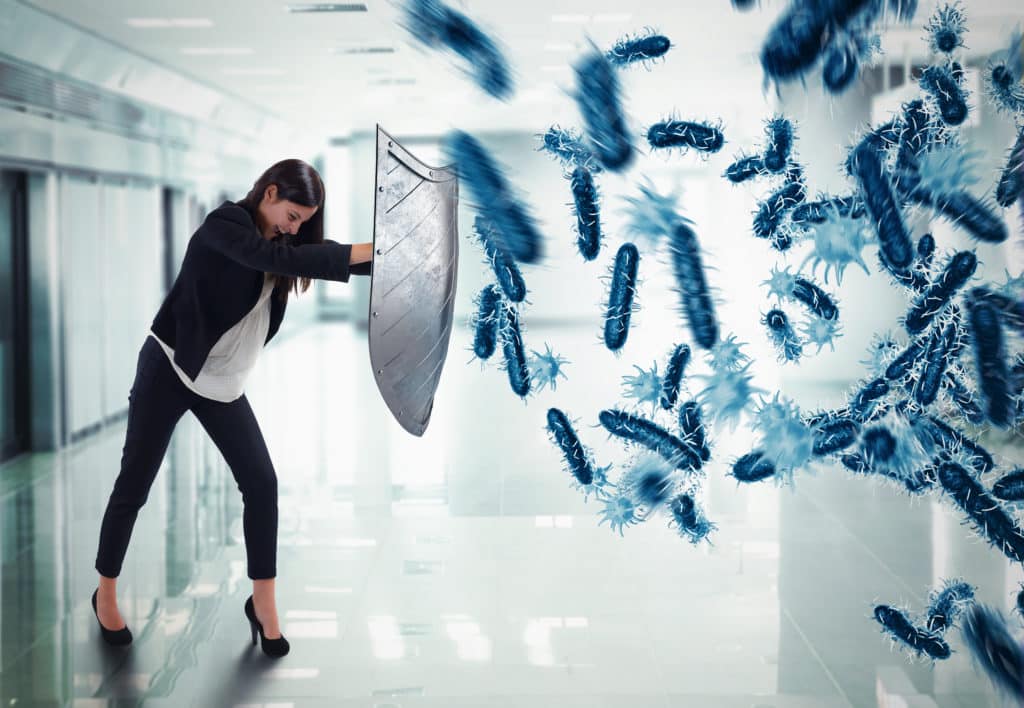The slander of our best friends
Bacteria play a key role in the evolution of humans. Thanks to their gene pool, we have been able to adapt to new environmental conditions over the course of time and thus survive. Without the genetic material of bacteria and their extraordinary abilities, humans would have died out long ago.
38 trillion bacteria make up the microbiome
There are around 38 trillion bacteria in our body, in contrast to around 30 trillion body cells. Together they form the
However, the term microbiome is not very familiar outside of the scientific community and interested laypeople. It therefore often seems more appropriate to speak of “good” and “bad” microorganisms. But here, too, it is not easy to draw the line.
Good bacteria, bad bacteria
Good bacteria are microorganisms that have a positive function for the human body. This can be done either directly or indirectly. Some microorganisms are only the necessary supporters of other beneficial bacteria, without which the latter cannot survive, but have no direct effect on humans themselves. These symbioses almost always occur in bacterial communities.
Bad pathogens, on the other hand, are microorganisms that can harm the body and cause infection or disease. This can occur through their massive multiplication or through the release of toxins or by displacing good bacteria and thus eliminating their positive effect.
In the public perception, bacteria are usually bad. “You’ve caught something” – this sentence alone implies that something “bad”, “evil”, a “parasite” has “invaded” us and that we are “threatened” by it. This is also due to the strong market position of antibiotic drugs. Almost everyone has had to swallow an antibiotic to expel “nasty” germs from their body when they fall ill. The pharmaceutical companies’ advertising uses a very simple image here: harmful germs have invaded the body, cause an infection and are expelled or destroyed by the all-purpose weapon of antibiotics. The problem of increasing resistance is hardly ever addressed. Even if the list of pathogenic germs is not particularly long compared to the hundreds of thousands of species that have a beneficial effect on humans, it is the “bad” germs that can only be defeated by “antibiotics” that dominate public perception.
Media love bad bacteria and bad news
This is particularly due to media coverage. The positive effects of microorganisms are hardly ever reported. On the one hand, this may be due to the lack of microbiological expertise in the mass media, but on the other hand it may also be due to the fact that negative news in particular generates headlines. When a “killer bacterium”, “body eater” or a deadly infection is reported, which has again killed a “defenseless” person, the attention of most readers is greater than when it is written about the fact that bacterium A promotes the growth of bacterium B, which has a positive influence on body function C.

Media, pharma and patients – a fatal triangular relationship
The sensationalism of the mass media and its audience, the focus on clicks and advertising content is fostering the creation of a dystopia in which bacteria are our enemies that must be destroyed. In this traumatized world, antibiotics and pharmaceutical companies’ drugs are also much easier to sell. It is a fatal win-win situation: the pharmaceutical companies make money from people’s fear of the severe course of a bacteria-induced infection. And patients are supplied with drugs and medications that work quickly and reliably and for which they do not have to adjust their lifestyle and behavior. However, the fact that this also destroys the good microorganisms – not only in the gut – which in turn leads to new diseases, is constantly ignored. Not to mention the increasing resistance that can make the difference between life and death in the few fatal infections that really do require the use of antibiotics. This fatal triangular relationship between the media (bad news sells better), pharmaceutical companies (fear of bacterial infections leads to increased use of antibiotics and is therefore a sales driver) and patients (quick solutions are needed) leads to a distorted view and makes us forget that bacteria are actually “the good guys”. (JS)
Header:
Adobe Stock / Anton – stock.adobe.com; Adobe Stock / Kateryna_Kon – stock.adobe.com



